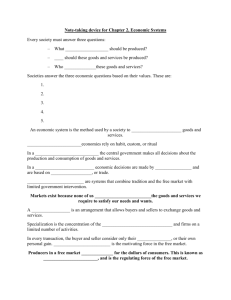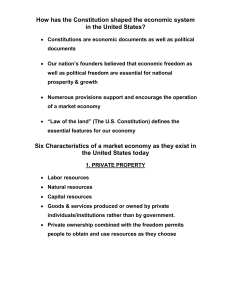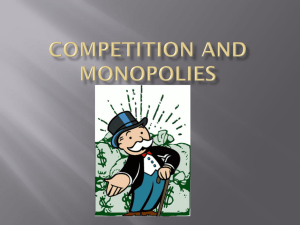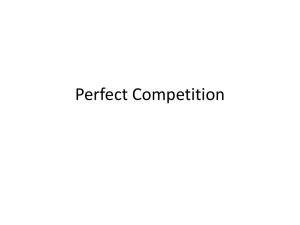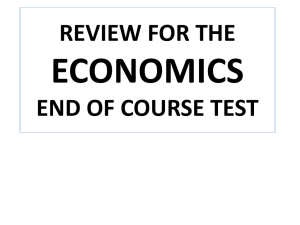Market Structure - eitzmansocialstudies
advertisement
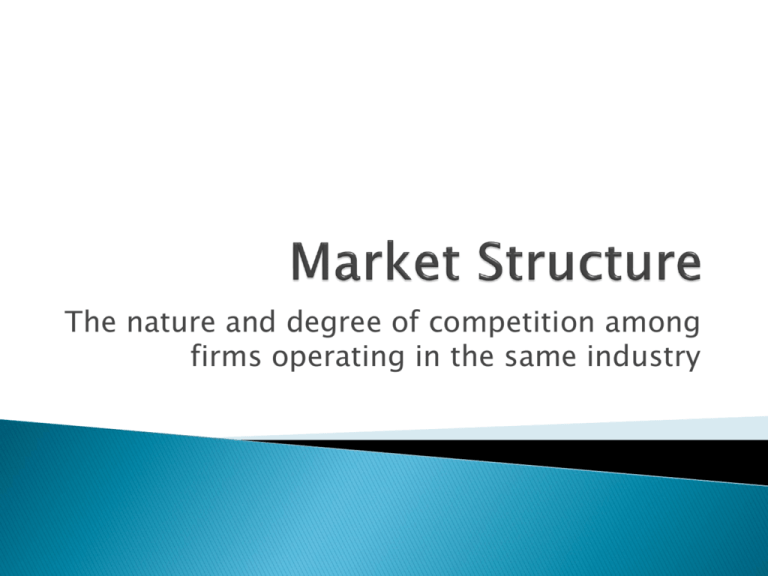
The nature and degree of competition among firms operating in the same industry Large number of buyers and sellers Buyers and sellers deal in identical products with no difference in quality Buyer and sellers act independently Buyers and sellers are reasonably wellinformed about products and prices Buyers and sellers are free to enter into, conduct, or get out of business Supply and demand set the equilibrium price After a price is set industry decides on output The maximum profit occurs when the Marginal cost of a product equals the marginal revenue. Look at page 165 Few perfect markets exist ◦ Vegetable farming….roadside markets Imperfect markets lacks one or more of the conditions. This structure has all conditions of perfect competition except for identical products. Therefore it monopolizes a small portion of the market. Real or imagined differences between competing products in the same industry ◦ Different brands ◦ Are they really real or do they just appear real? ◦ Nike, Adidas, New Balance? Use of advertising, giveaways, or other promotional campaigns to convince buyers that the product is somehow better than another brand. Narrow price range◦ Sellers raise or lower the price within this narrow range to keep buyers from switching brands. ◦ Think about shoes…what is the most you will pay? ◦ What if they are too cheap? Does that affect you? A market structure in which a few very large sellers dominate the industry. ◦ Auto-industry ◦ The number of firms is not as important as the ability to change output ◦ Further from perfect competition than monopoly When one firm acts another follows ◦ Employee pricing Collusion-a formal agreement to set prices in a cooperative manner Price Fixing-agreeing to change the same or similar prices. This is almost always higher than the market price. One company changes expecting the others to follow. ◦ What if they do not? ◦ Why do they? ◦ Think about gas prices. Marginal cost equals marginal revenue. Much higher than perfect competition and higher than monopolistic competition. Opposite end of the spectrum from perfect competition. Only one seller of a particular product Extreme case. In some rural areas internet and phone companies Natural monopoly- costs of production are minimized by having a single firm produce the product Phone lines and gas lines Cost of production falls as the firm gets larger Absence of other sellers in that area ◦ Byron Nebraska has one grocery story and one gas station…closest is 18 miles A patent may be granted for 20 years and copyrights last for lifetime plus 50 years. ◦ Disney was great at this. Only the government can provide the service or good. ◦ Weapons and resources They have the greatest ability to set price. They also have the largest profit opportunity. The price market allows them to charge more and produce less.





